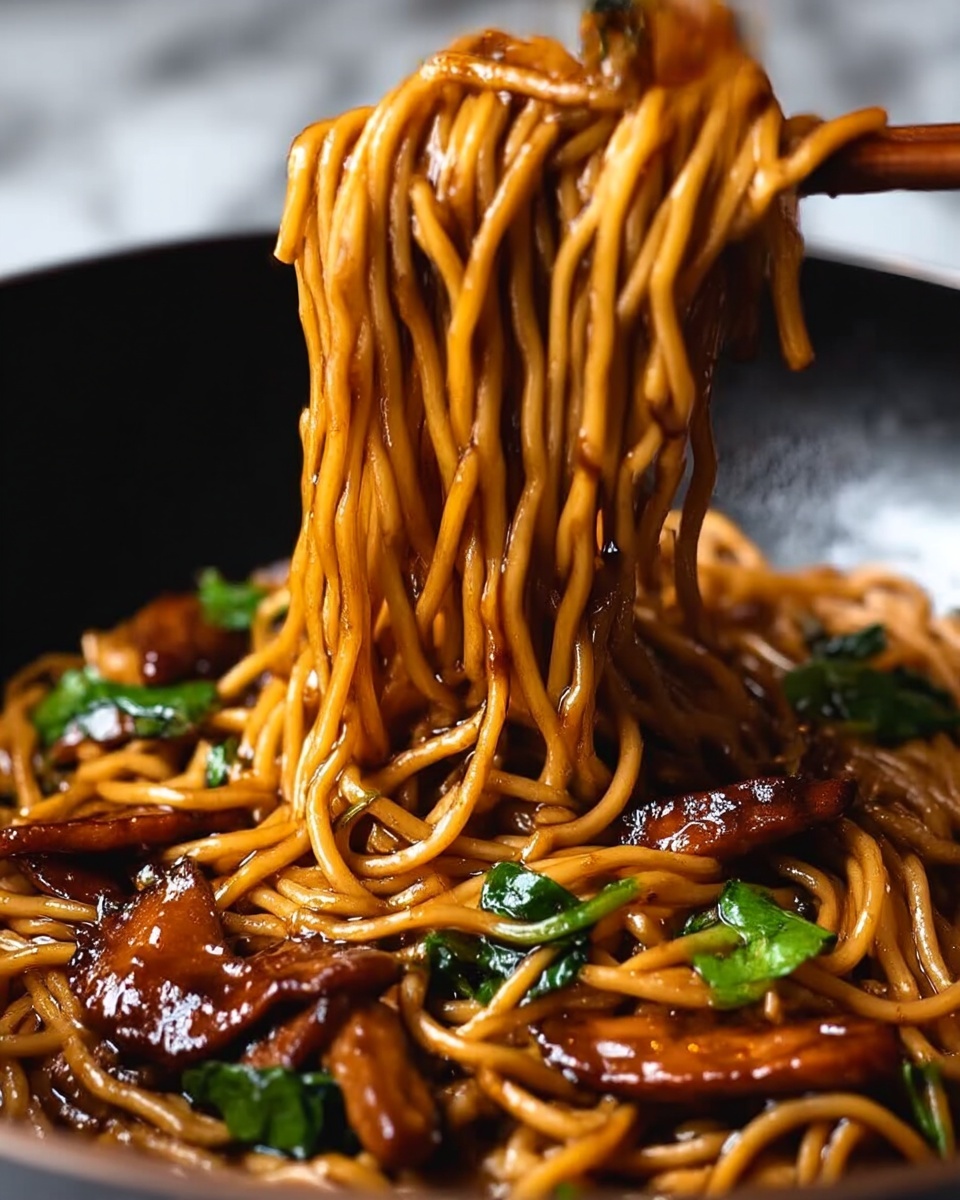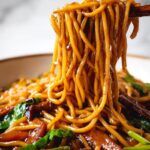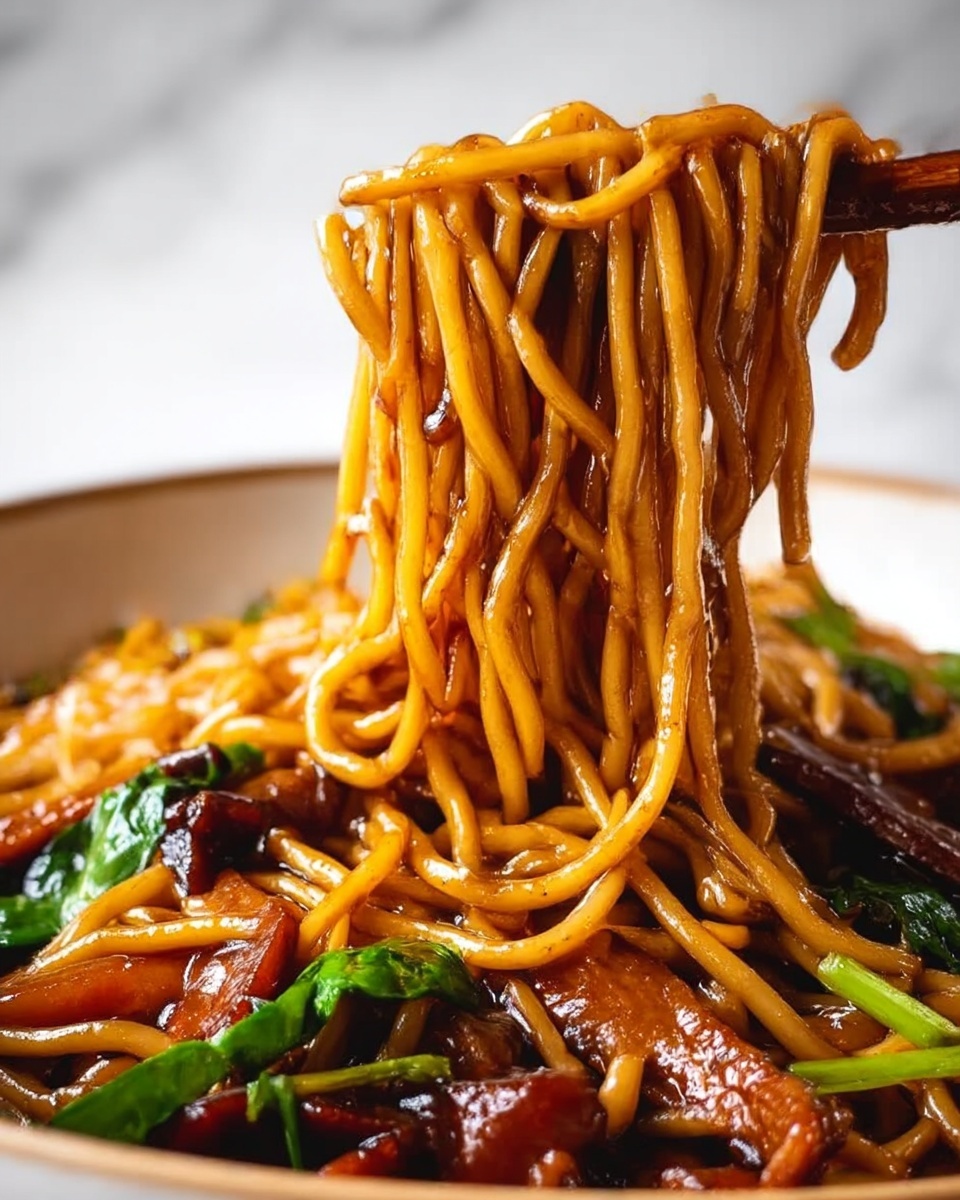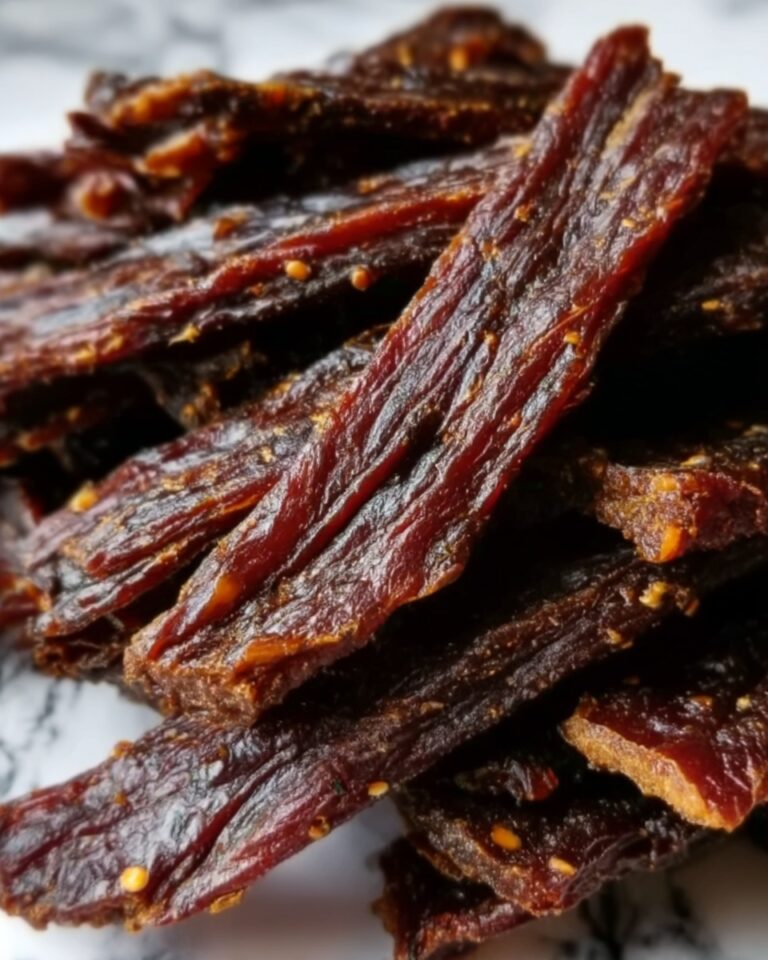Get ready to fall in love with the heart and soul of Shanghai street food right in your own kitchen with Shanghai Fried Noodles: An Amazing Ultimate Recipe. This dish is a perfect harmony of thick, chewy noodles tossed with tender pork, vibrant napa cabbage, and a savory blend of soy and oyster sauces—a flavor-packed feast that’s approachable, quick, and incredibly satisfying. Whether you’re craving something comforting after a busy day or want to impress friends with a colorful, authentic stir-fry, this recipe delivers a truly unforgettable experience.
Ingredients You’ll Need

Ingredients You’ll Need
You need just a handful of simple, fresh ingredients to nail this dish, each playing a vital role in delivering the right flavor, texture, and color that make this recipe shine. From thick Shanghai-style noodles that soak up every drop of sauce to fresh vegetables that add crunch and brightness, these ingredients come together in perfect balance.
- 8 ounces Shanghai-style thick wheat noodles (or udon noodles): The chewy, thick noodles provide the signature texture critical to this dish.
- 1 tablespoon vegetable oil: Neutral base oil that helps stir-fry everything evenly without overpowering the flavors.
- 1 tablespoon sesame oil: Adds a rich, nutty aroma that elevates the entire dish.
- 2 cloves garlic (minced): Fresh garlic infuses the pork and veggies with essential savory depth.
- 1/2 pound pork tenderloin (thinly sliced): Tender, lean protein that cooks quickly and tenderly.
- 1 tablespoon soy sauce: Provides salty umami that binds all elements beautifully.
- 1 tablespoon oyster sauce: Brings a subtle sweetness and complexity characteristic of Chinese cooking.
- 1 tablespoon dark soy sauce: Adds deep color and a hint of richness to the noodles.
- 1 teaspoon sugar: Balances the salty and savory notes for harmony.
- 1/4 teaspoon white pepper: Offers a mild heat that gently awakens the palate.
- 2 cups napa cabbage (thinly sliced): Adds crunch, freshness, and a slight sweetness that lightens the dish.
- 1/2 cup carrots (julienned): Bright orange color and mild sweetness provide contrast and texture.
- 2 green onions (sliced): Fresh garnish that adds a pop of color and a subtle oniony bite.
How to Make Shanghai Fried Noodles: An Amazing Ultimate Recipe
Step 1: Prepare Noodles
Begin by cooking the Shanghai-style thick wheat noodles according to package instructions until just tender but still firm. Drain them well and set aside so they don’t become mushy during stir-frying.
Step 2: Stir-Fry Aromatics and Pork
Heat both the vegetable oil and sesame oil in a large skillet or wok over medium-high heat. Once hot, toss in the minced garlic and thin slices of pork tenderloin. Keep stirring for 3 to 4 minutes until the pork is cooked through and fragrant from the garlic, infusing the base flavors.
Step 3: Add Sauces and Seasonings
Pour in the soy sauce, oyster sauce, dark soy sauce, sugar, and white pepper right over the pork. Stir everything together carefully, making sure the pork is evenly coated in the glossy, savory sauce mixture that gives this dish its unforgettable bold taste.
Step 4: Incorporate Vegetables
Next, add the thinly sliced napa cabbage and julienned carrots. Stir-fry for 2 to 3 minutes so the veggies soften slightly but still retain a pleasant crunch, balancing texture with flavor and brightness.
Step 5: Combine Noodles and Final Toss
Now it’s noodle time! Add the cooked noodles back into the pan, giving the entire mixture a good toss. Ensure every strand is luxuriously coated with the sauce, absorbing all those vibrant flavors. Stir-fry for an additional 2 minutes to marry everything perfectly.
Step 6: Garnish and Serve
Remove the pan from heat and sprinkle the sliced green onions on top for an inviting burst of color and freshness. Serve immediately while it’s delightfully hot and flavorful.
How to Serve Shanghai Fried Noodles: An Amazing Ultimate Recipe
Garnishes
Adding freshly sliced green onions is the classic finish, but you can also sprinkle toasted sesame seeds or a drizzle of chili oil if you love a little kick. These garnishes not only brighten the presentation but also add layers of texture and flavor that make each bite exciting.
Side Dishes
Pair these noodles with light, refreshing sides like a cold cucumber salad or steamed bok choy tossed with a touch of garlic. The crunch and mildness of the sides perfectly balance the rich and hearty noodles, making the meal complete and satisfying.
Creative Ways to Present
For a fun twist, plate the noodles in individual bowls and top them with a fried egg or crispy shallots for extra indulgence. Alternatively, serve the noodles family-style on a large platter surrounded by small bowls of pickled vegetables or chili paste to let everyone customize their bites.
Make Ahead and Storage
Storing Leftovers
If you have any leftovers, store them in an airtight container in the refrigerator for up to 2 days. The noodles may soak up the sauce as they rest, so giving them a quick toss when reheating helps revive that freshly cooked texture.
Freezing
While this dish is best enjoyed fresh, you can freeze the cooked noodles for up to one month. To freeze, cool completely and portion into freezer-safe containers. Reheating might soften the vegetables slightly, so consider adding fresh veggies or green onions after warming.
Reheating
Reheat gently in a skillet over medium heat to bring back the chewiness of the noodles and the vibrant flavors, adding a splash of water or soy sauce to keep them moist. Avoid microwaving directly to prevent uneven heating and sogginess.
FAQs
Can I substitute the pork with other proteins?
Absolutely! Chicken, beef, or even tofu work wonderfully in this recipe. Adjust the cooking time accordingly depending on the protein, but the savory sauce blend remains the star.
Where can I find Shanghai-style noodles?
Most Asian grocery stores carry Shanghai-style thick wheat noodles. If you can’t find them, thick udon noodles make a tasty alternative that brings a similar chewy texture.
Is this dish gluten-free?
This recipe uses soy sauce, which typically contains gluten. To make a gluten-free version, opt for gluten-free tamari soy sauce and ensure oyster sauce alternatives are also gluten-free.
Can I make a vegetarian version of Shanghai Fried Noodles?
Yes! Substitute pork with firm tofu and use mushroom-based oyster sauce to keep the umami flavor rich and satisfying while keeping it meat-free.
How spicy is this recipe?
Shanghai Fried Noodles as outlined here are mild with just a subtle heat from white pepper. You can kick it up by adding chili oil or fresh chili slices if you prefer more spice.
Final Thoughts
There is something truly special about this Shanghai Fried Noodles: An Amazing Ultimate Recipe that captures the essence of homey street food with every delicious mouthful. It’s fast, flavorful, and endlessly versatile—a recipe that invites creativity and guarantees a satisfying meal anytime. I can’t encourage you enough to give it a try and bring a touch of Shanghai magic into your kitchen.
Print
Shanghai Fried Noodles: An Amazing Ultimate Recipe
- Prep Time: 10 minutes
- Cook Time: 15 minutes
- Total Time: 25 minutes
- Yield: 2 servings
- Category: Main Course
- Method: Stir-Frying
- Cuisine: Chinese
- Diet: Low Lactose
Description
Shanghai Fried Noodles is a classic Chinese stir-fry dish featuring thick wheat noodles tossed with tender pork, fresh napa cabbage, and carrots in a savory blend of soy and oyster sauces. This quick and flavorful recipe combines chewy noodles with a deliciously balanced sauce, making it a perfect weeknight dinner or street food favorite.
Ingredients
Noodles
- 8 ounces Shanghai-style thick wheat noodles (or udon noodles)
Sauce and Oils
- 1 tablespoon vegetable oil
- 1 tablespoon sesame oil
- 1 tablespoon soy sauce
- 1 tablespoon oyster sauce
- 1 tablespoon dark soy sauce
- 1 teaspoon sugar
- 1/4 teaspoon white pepper
Vegetables
- 2 cups napa cabbage (thinly sliced)
- 1/2 cup carrots (julienned)
- 2 green onions (sliced)
Protein and Aromatics
- 1/2 pound pork tenderloin (thinly sliced)
- 2 cloves garlic (minced)
Instructions
- Cook Noodles: Prepare the Shanghai-style thick wheat noodles according to the package instructions until al dente. Drain well and set aside to prevent overcooking.
- Heat Oils and Aromatics: In a large skillet or wok, heat the vegetable oil and sesame oil over medium-high heat. Add the minced garlic and sauté briefly until fragrant, about 30 seconds.
- Cook Pork: Add the thinly sliced pork tenderloin to the pan and stir-fry until fully cooked through and no longer pink, approximately 3 to 4 minutes.
- Add Sauces and Seasonings: Stir in the soy sauce, oyster sauce, dark soy sauce, sugar, and white pepper. Mix well to evenly coat the pork with the flavorful sauce base.
- Cook Vegetables: Incorporate the thinly sliced napa cabbage and julienned carrots into the pan. Continue stir-frying for 2 to 3 minutes until the vegetables are slightly wilted but still crisp.
- Toss Noodles: Add the cooked noodles to the skillet and toss everything together carefully to ensure the sauces evenly coat the noodles and ingredients.
- Finish Stir-Frying: Stir-fry the combined mixture for another 2 minutes over medium-high heat to marry all the flavors and heat through thoroughly.
- Garnish and Serve: Remove the pan from heat, sprinkle with sliced green onions for freshness and flavor, then serve hot for an authentic Shanghai-style noodle experience.
Notes
- Substitute pork with chicken, beef, or tofu for different protein variations.
- For a vegetarian version, use mushroom-based oyster sauce and omit the meat.
- Shanghai noodles can be found in most Asian grocery stores; thick udon noodles are a suitable alternative.
- Adjust the level of soy sauce and oyster sauce to taste, depending on your preferred saltiness.
- Ensure not to overcook the vegetables to maintain a pleasant crunch.








